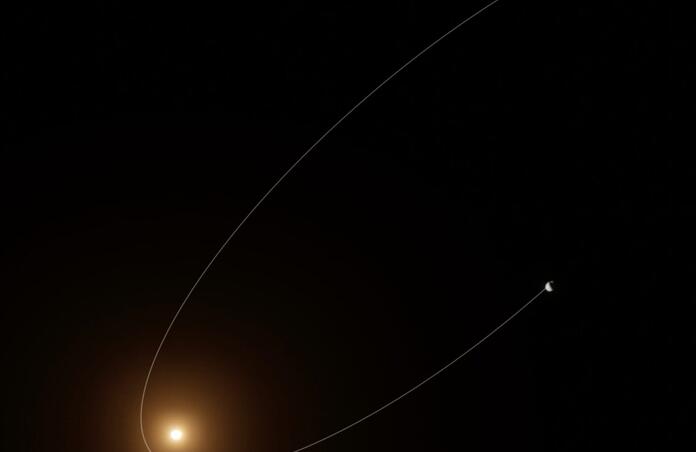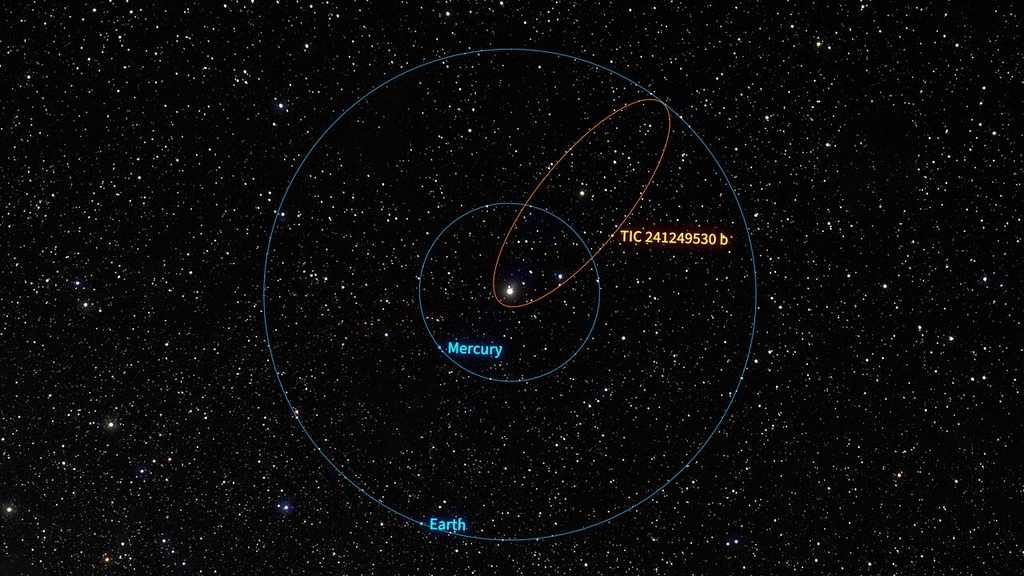Team discovers the most eccentric planet yet

A team at Penn State have discovered a transiting exoplanet with the most eccentric orbit found. Thought to be a hot Jupiter progenitor, this extreme exoplanet can aid in our understanding of the formation and evolution of hot Jupiters, which has largely remained a mystery.
"We caught this massive planet making a sharp, hairpin turn during its close passage to its star," said Suvrath Mahadevan, the Verne M. Willaman Professor of Astronomy at Penn State and author on the paper. "Such highly eccentric transiting planets are incredibly rare—and it's really amazing that we were able to discover the most eccentric one."
The eccentricity is a measure of how circular a planets orbit is around its host star, ranging from completely circular at 0 to highly eccentric at 1. The new exoplanet, dubbed TIC 241249530 b possesses an eccentricity of 0.94, winning it the title of the most eccentric transiting exoplanet ever found. The fascinating system is located 1,100 light years from Earth. Comparing this to our solar system, Pluto’s orbit is thought of as highly elliptical at 0.25, whereas Earth’s orbit sits at a rather circular 0.02.

Such an extreme orbit would give rise to vast temperature changes on the planet. If it were placed in our solar system, its closest point would reach 10x closer than Mercury, then extending out to the farthest point just beyond Earth.
Another intriguing characteristic of this system is the retrograde orbit the hot Jupiter follows. This means that it orbits in the opposite direction to the host stars rotation. Such motion is not commonly seen in exoplanets, therefore providing the team with a key piece of information about its formation history.
"While we can't exactly press rewind and watch the process of planetary migration in real time, this exoplanet serves as a sort of snapshot of the migration process," Arvind Gupta, NOIRLab postdoctoral researcher and lead author of the paper, who conducted the research as a doctoral student at Penn State, said in a NOIRLab release. "Planets like this are hard to find and we hope it can help us unravel the hot Jupiter formation story."
Currently, nearly 5700 exoplanets have been confirmed, with 300 to 500 of these categorised as hot Jupiters - a class of gas giants physically similar to Jupiter but with much shorter orbital periods of less than 10 days. The formation history of hot Jupiters has remained an ongoing mystery, however, astronomers have proposed that the most likely formation scenario is that they initially form further out as ‘cold Jupiters’, followed by a migration inwards to their current close-in orbits.
Although the early stages of this mechanism haven’t been observed frequently, this new eccentric system provides a clue into how the mystery may be solved. "Astronomers have been searching for exoplanets that are likely precursors to hot Jupiters, or that are intermediate products of the migration process, for more than two decades, so I was very surprised—and excited—to find one," Gupta said.
After running several simulations of orbital dynamics of the system, the team found that the planets highly elliptical and retrograde orbit are indicators that the planet is in the process of evolving into a hot Jupiter, undergoing high eccentricity migration. The planet orbits around a primary star, which in turn orbits a secondary star in a stellar binary system. The interaction between the two orbits of the planet and star have caused the planet to migrate inwards over time. Currently, TIC 241249530 b has an orbital period of 167 days, however, this is predicted to reduce to a much tighter, circular orbit of a few days in 1 billion years’ time, forming a hot Jupiter.
The extreme hot Jupiter progenitor was first discovered by NASA’s Transiting Exoplanet Survey Satellite, or TESS in early 2020. To further confirm the exoplanets existence and rule out any other possible causes, the team used two instruments on the WIYN 3.5m telescope at the US National Science Foundation (NSF) Kitt Peak National Observatory (KPNO), which is a program of NSF NOIRLab. The NN-EXPLORE Exoplanet and Stellar Speckle Imager (NESSI) was used, applying a technique to ‘freeze out’ the atmospheric twinkling, showing that there were no unrelated stars nearby that could’ve caused the signal observed.
As a follow up, the team used the NEID spectrograph, the Habitable Zone Planet Finder spectrograph, and a photometric diffuser to observe and analyse the light emitted by the planet. From this, they observed how the host stars spectrum shifted due to the exoplanet orbiting the star, also known as its radial velocity. Tracking this movement over a six month orbital period of the planet revealed that the exoplanet is 5x more massive than Jupiter, and follows an extremely eccentric path.
"This is the most eccentric transiting planet known and will prove to be as important as the previous record holder, HD80606b, which likewise has a wacky orbit highly misaligned with its host star's spin," said Jason Wright, Penn State professor of astronomy and astrophysics, who supervised the project while Gupta was a doctoral student at the university.
These two exoplanets support the notion that higher mass gas giants evolve to form hot Jupiters as they migrate from highly eccentric orbits towards closer, more circular orbits
--
Cover image: Abigail Minnich/ Penn State
Journal source: Arvind Gupta, A hot-Jupiter progenitor on a super-eccentric retrograde orbit, Nature (2024). DOI: 10.1038/s41586-024-07688-3. www.nature.com/articles/s41586-024-07688-3
